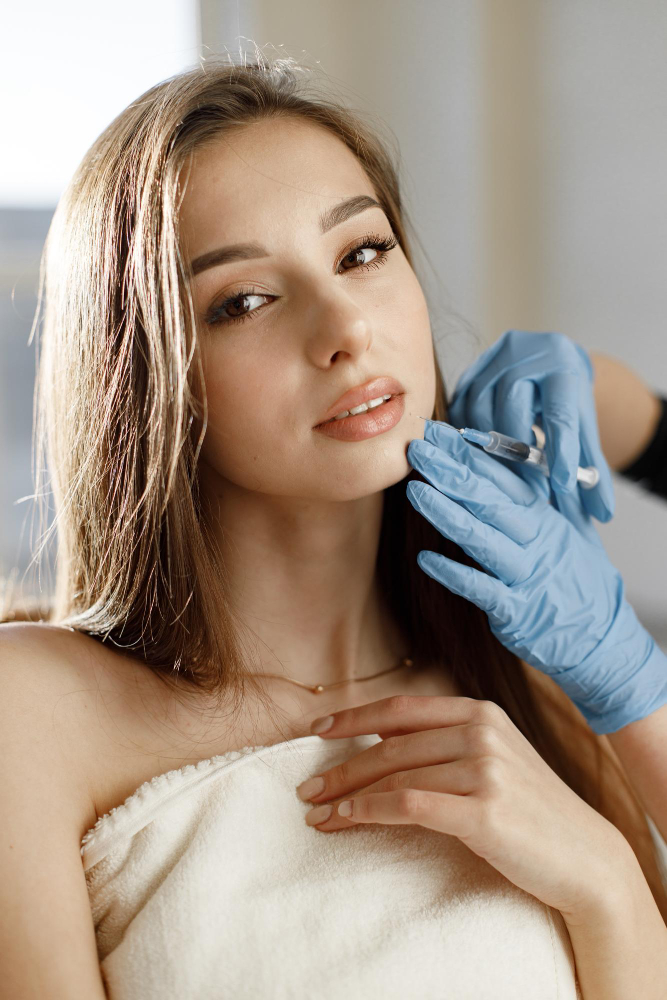
Dermal fillers are injectable substances used to restore volume, smooth lines, and enhance facial contours. Here’s an overview of dermal fillers, including how they work, common uses, and potential side effects:
1. Composition: Dermal fillers contain various substances, such as hyaluronic acid (HA), calcium hydroxylapatite (CaHA), poly-L-lactic acid (PLLA), or polymethylmethacrylate (PMMA). Each type of filler has unique properties and is suited for specific areas of the face.
2. How They Work: Dermal fillers work by adding volume to targeted areas of the face, filling in wrinkles and lines, and restoring lost volume due to aging or other factors. Depending on the type of filler used, they may also stimulate collagen production, further enhancing skin elasticity and firmness over time.
3. Common Uses:
– Wrinkle Reduction: Dermal fillers can be used to smooth lines and wrinkles, including nasolabial folds (smile lines), marionette lines, and forehead lines.
– Lip Augmentation: Fillers can add volume and definition to the lips, enhancing their shape and fullness.
– Cheek Enhancement: By adding volume to the cheeks, dermal fillers can restore youthful contours and improve facial symmetry.
– Under Eye Rejuvenation: Fillers can minimize the appearance of hollows or dark circles under the eyes, giving a refreshed and rejuvenated appearance.
– Hand Rejuvenation: Dermal fillers can plump and hydrate the skin on the hands, reducing the visibility of veins and tendons.
4. Procedure: Dermal filler injections are typically performed in a clinical setting by a qualified healthcare provider. Before the procedure, the treatment area may be numbed with a topical anesthetic to minimize discomfort. The filler is then injected into the targeted areas using a fine needle or cannula.
5. Results and Duration: Results from dermal fillers are usually immediate, with noticeable improvements in volume and smoothness. The duration of results varies depending on factors such as the type of filler used, the treated area, and individual metabolism. On average, results can last from six months to two years, after which touch-up treatments may be needed to maintain optimal results.
6. Potential Side Effects: While dermal fillers are generally safe when performed by a trained professional, they can cause temporary side effects such as bruising, swelling, redness, or tenderness at the injection site. More serious complications, such as allergic reactions or infection, are rare but possible and should be promptly addressed by a healthcare provider.
It’s essential to consult with a qualified and experienced healthcare provider to determine if dermal fillers are suitable for your aesthetic goals and medical history. They can provide personalized recommendations and ensure safe and effective treatment outcomes.

